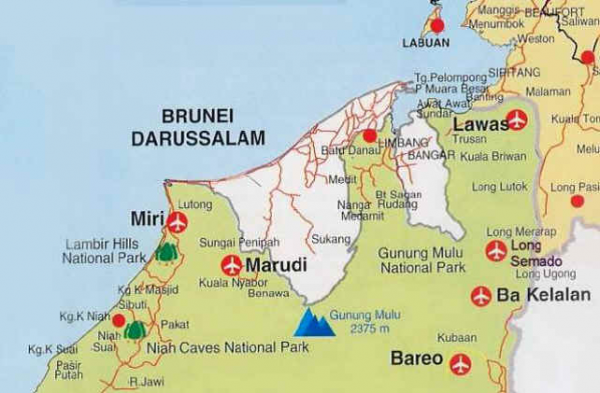
The Long Semadoh region is home to 7 villages, namely Puneng Trusan, Long Telingan, Long Semadoh Rayeh, Long Semadoh Nesab, Long Tanid, Long Beluyu and Long Kerabangan.Most of the villagers of this region get their income from rice farming, buffalo herding, cow herding and the planting and harvesting of palm oil.Ba Kelalan is home to the Lun Bawang, Kayan and other ethnicities, with three weekly flights by the 18-seater Twin Otter planes under MASWings, on Mondays, Wednesdays and Saturdays.
DAY 1: The Journey to Long Telingan
The journey to Long Semadoh began in Miri, with a 45 minute flight to Lawas followed by a 2 hour 4WD ride to Long Telingan (one of the longhouses in the Long Semadoh region). On arrival at Long Telingan, the local tour guide gave a short brief on the upcoming trek to the Long Telingan Homestay.
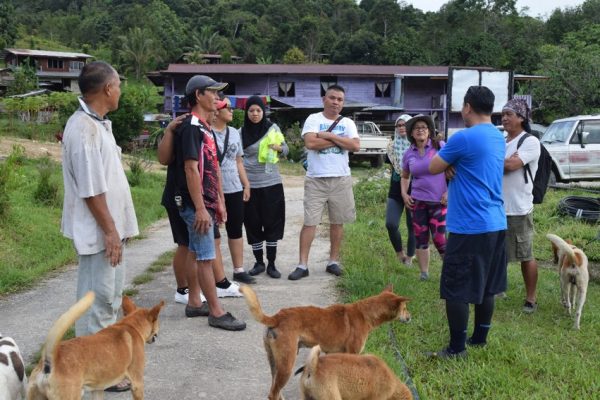
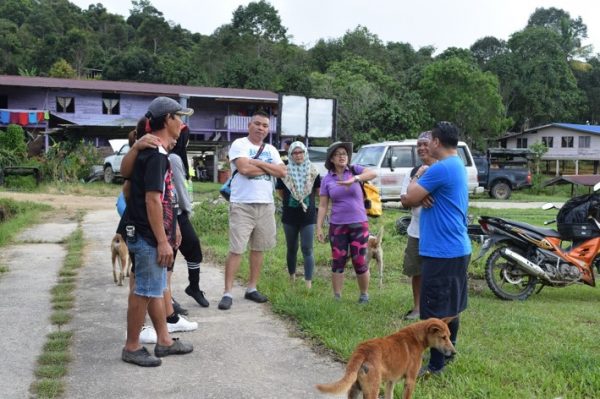
The trek was exciting, leading the group over rivers and onto suspended bridges, through farms and jungle areas.
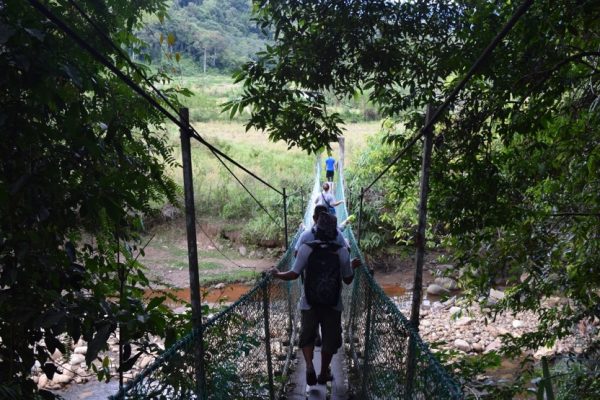
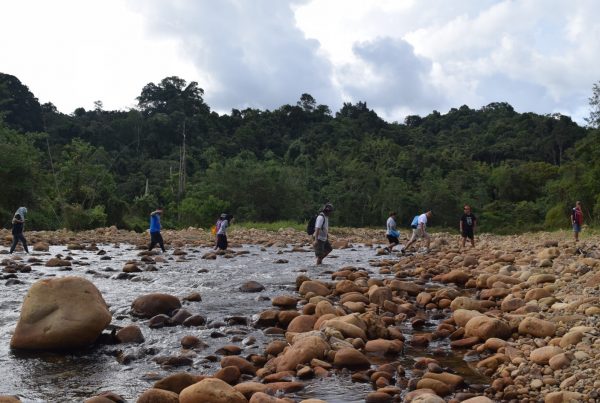
The first stop along the trek was Batu Narit, a megalith that stood upright with spiral carvings. Though most of the meanings for these stones are lost to time, most agree that the stones commonly mark the achievements and lives of important people from the past, stories of legendary strong men such as Upai Semaring (a ‘giant’ that lived in the Ba Kelalan area) or mythical creatures.
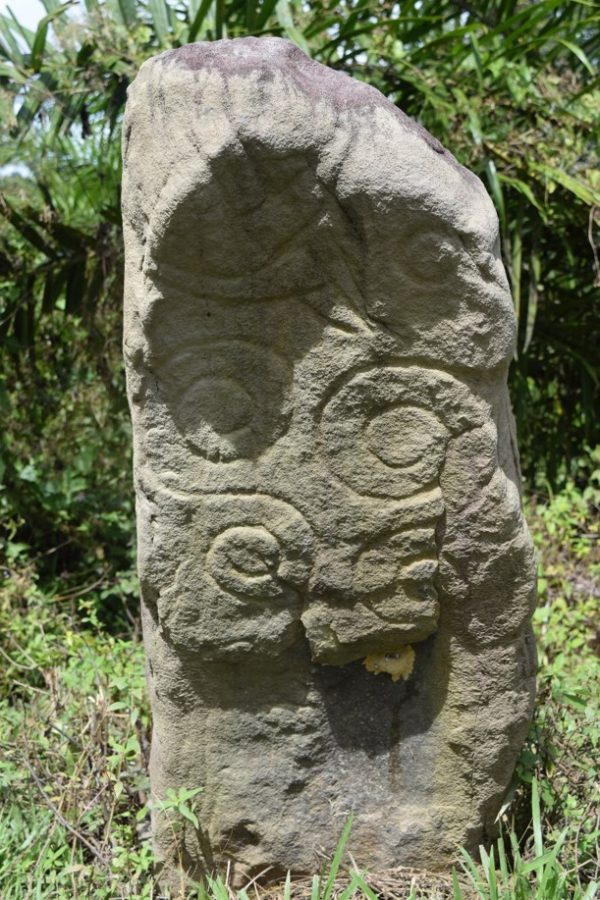
For more information on some of the local legends or a more in depth account of experiences trekking in Ba Kelalan, visit the blog Footsteps on Fringe written by Carolyn Hong.Along the way, the group stopped at the hiding place of the escaping missionaries during World War II. A temporary plaque was placed to mark the area where the missionaries stayed.

Tapak tempat tinggal C.Hudson & isteri Winsome Southwell bersama Geraldine Anderson (isteri kepada Resident Limbang) Dari March-August 1942.John Wilfinger menyertai mereka sejak mei 1942. August-September mereka bersembunyi di sungai matang. 21st sept. mereka kembali dalam perjalanan untuk menyertai diri. Atas arahan tentera Jepun.1 October mereka memulakan perjalanan ke sundar selama 9 hari kemudian dibawa ke Brunei sebagai tahanan rumah sebelum dibawa ke Batu Lintang”
Translation: “This is was the hiding place of C. Hudson & his wife Winsome Southwell together with Geraldine Anderson (wife to the Resident of Limbang) From March – August 1942. John Wilfinger joined them in May 1942. August - September, they hid at Sungai Matang. On the 21st of September, they continued their journey resulting in surrender.At the order of the Japanese soldiers, on 1st October they began their 9 day journey to Sundar. They were later brought to Brunei and kept under house arrest before being brought to Batu Lintang.” The trek ended as the group arrived at Long Telingan homestay for the night.
DAY 2: Onwards to Ba Kelalan
After leaving the Long Telingan Homestay, the group stopped along the Tagang River at Long Lidung.
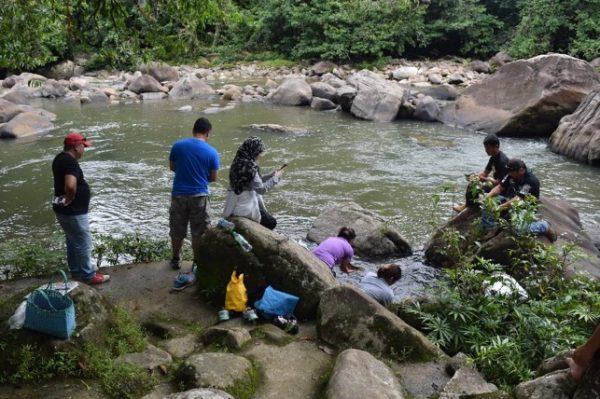
The river is so full of fish, one can even try their hand at hand fishing. 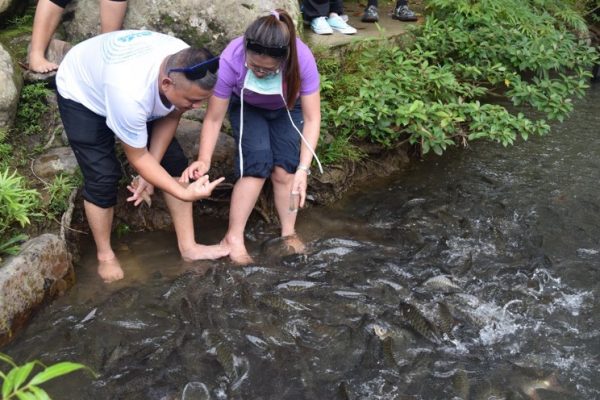
Instructions from the Master 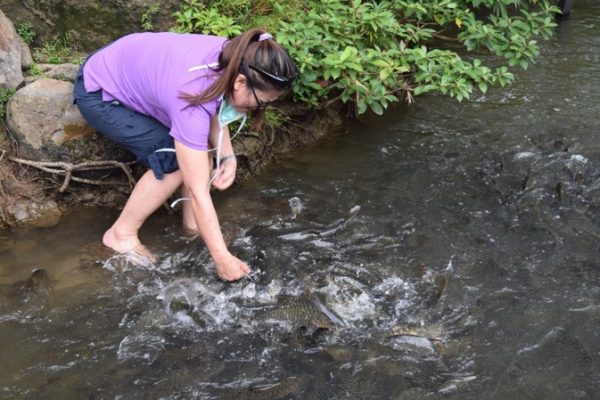
First attempt 
Success!
The group then traveled by 4WD for two hours on the logging roads to Ba Kelalan. They stopped over Buduk Aru Missionary Bible School and visited the Pendita Meripa and Pendita Ganit memorial. Pendita Meripa and Pendita Ganit in fact the honorable names bestowed upon Reverend Alan Francis Belcher and his wife Reverend Madge Belcher by the locals, two well recognized and loved individuals who spent their days translating the bible to the local Lun Bawang and Lun Dayeh languages.
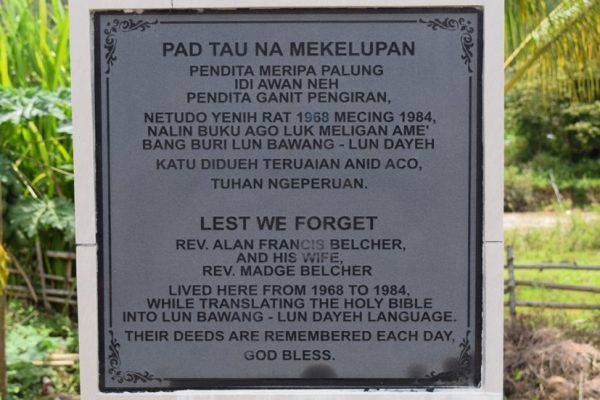
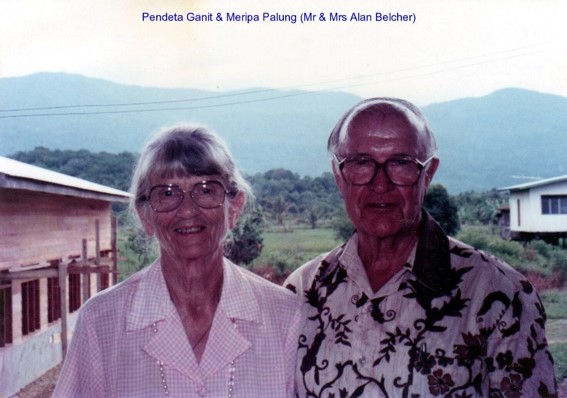
Before retiring to the Buduk Nur homestay, they stopped at the house of their driver and guide Mr. Robert Agong, where they viewed the creation of the local traditional crafts to be sold. These include the local bead necklaces, belts and sashes, traditional clothes as well as house decorations of the Lun Bawang people.
DAY 3: Farewell
As the group prepared to return to Miri, they contemplated their experiences among the Lun Bawang and Lun Dayeh people.They remarked on the genuine and warm ‘highlander hospitality’, on the wonder of the stories of Upai Semaring and other mythical warriors as well as the strong bonds between the different Lun Bawang and Lun Dayeh communities in Sarawak, Sabah, Brunei and Kalimantan. They did not have the opportunity to attend the Irau Aco Lun Bawang Festival held in June, but were regaled with tales and shown pictures of the joy and fellowship the event brought the local communities.The journeys over paddy fields, past mountains, across rivers and through rainforests were breathtaking and unlike anything anywhere else; a challenge and a memorable adventure.